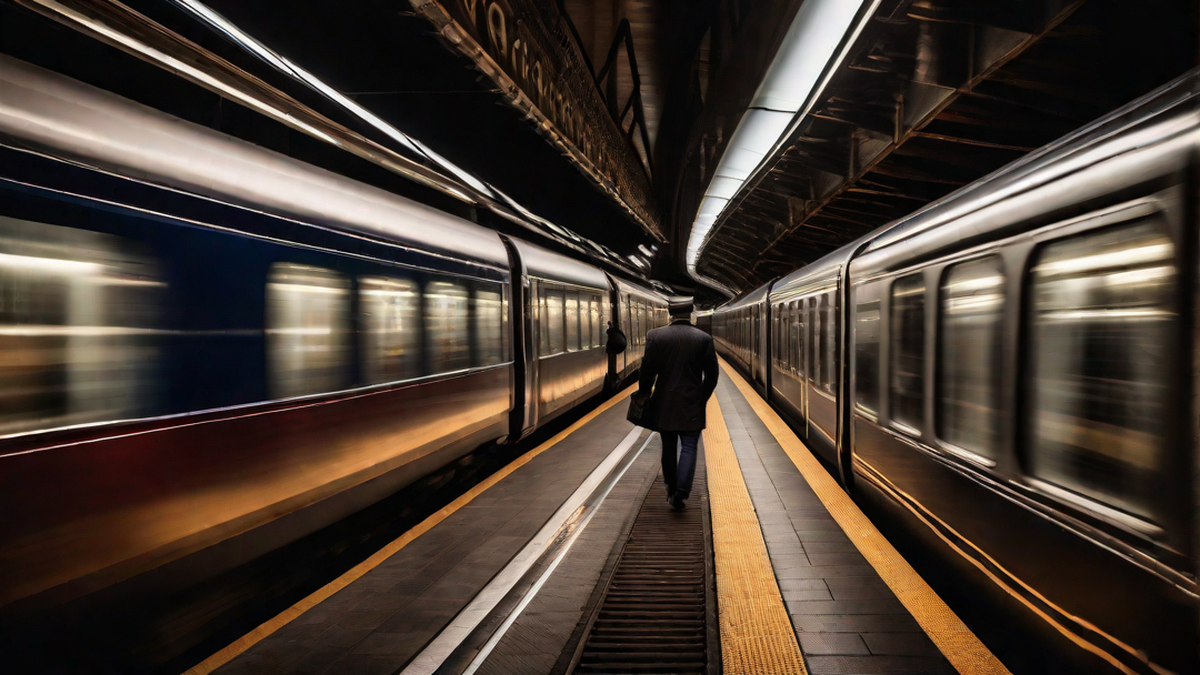Have you ever wondered what it would be like to hear the powerful sound of a train running? As a sound enthusiast and a lover of trains, I have always been fascinated by the unique and captivating sound of a train in motion. In this article, I will take you on a journey into the world of train running sound effects, exploring their origins, characteristics, and how they are created.
The Origin of Train Running Sound Effects
Train running sound effects have been an integral part of sound design for many years, used in various forms of media such as movies, television shows, and even video games. These sound effects are created to enhance the realism and immersiveness of a scene, allowing the audience to feel as though they are right there alongside the train.
The origins of train running sound effects can be traced back to the early days of cinema when silent films were the norm. Filmmakers would create soundscapes using various props and tools to mimic the sound of a moving train. This involved using things like wooden clogs on wooden planks to replicate the rhythmic sound of wheels on tracks or blowing into a whistle to imitate the piercing sound of a train horn.
As technology advanced, so did the techniques used to create train running sound effects. Today, sound designers have a wide range of tools at their disposal, including digital sound libraries filled with recordings of actual trains, specialized software for editing and manipulating sound, and even custom-built devices designed to recreate the specific sounds of different types of trains.
The Characteristics of Train Running Sound Effects
One of the most distinct characteristics of train running sound effects is the rhythmic nature of the sound. The steady chugging of the engine, the repetitive clicks and clacks of the wheels on the tracks, and the occasional blast of the train horn all contribute to the mesmerizing rhythm that is associated with trains.
Another characteristic of train running sound effects is the depth and resonance of the sound. When a train passes by, you can feel the vibrations in the ground and hear the low rumble that seems to reverberate through the air. This adds a sense of power and weight to the sound, further enhancing the realism and impact of the train’s presence.
Creating Train Running Sound Effects
Creating realistic and convincing train running sound effects requires a combination of technical knowledge, artistic skill, and attention to detail. Sound designers often start by researching the specific train they are trying to recreate, studying its engine, wheels, and other components to understand how they contribute to the overall sound.
Once they have a thorough understanding of the train’s characteristics, sound designers will use a combination of recorded sounds and synthesized elements to build the final sound effect. They may record the sound of an actual train passing by, capturing the different elements such as the engine, horns, and wheels separately. These recordings are then meticulously edited, layered, and mixed together to create a cohesive and realistic sound.
Some sound designers even go a step further and experiment with unconventional methods to create unique train running sound effects. This could involve using various objects and materials to mimic the sounds of different train components, such as using metal chains to recreate the clinking sound of coupling and uncoupling train cars or dragging a piece of metal along the ground to imitate the screeching sound of brakes.
In Conclusion
The world of train running sound effects is a fascinating one, combining artistic creativity and technical expertise to recreate the captivating sounds of trains in motion. Whether you are a sound enthusiast like myself or simply appreciate the attention to detail in movies and other forms of media, the immersive and realistic train running sound effects add an extra layer of authenticity to the overall experience.
So, next time you hear the sound of a train running, take a moment to appreciate the artistry and skill behind the creation of those incredible sound effects. It’s an often-overlooked aspect of filmmaking and sound design, but one that greatly enhances our viewing and listening experiences.

